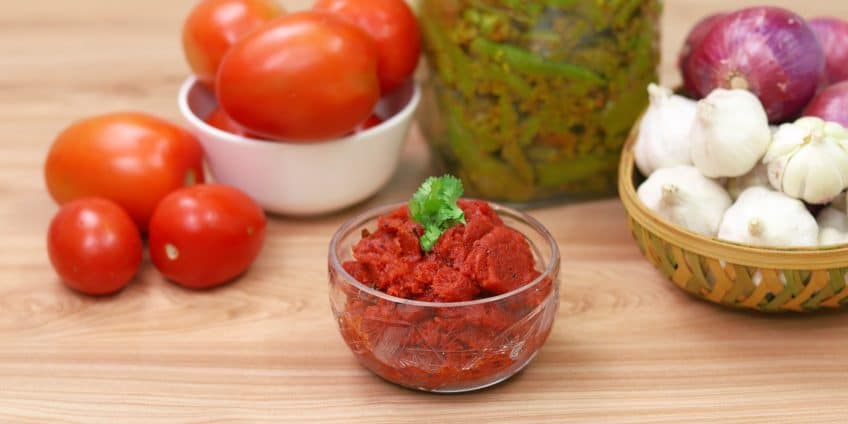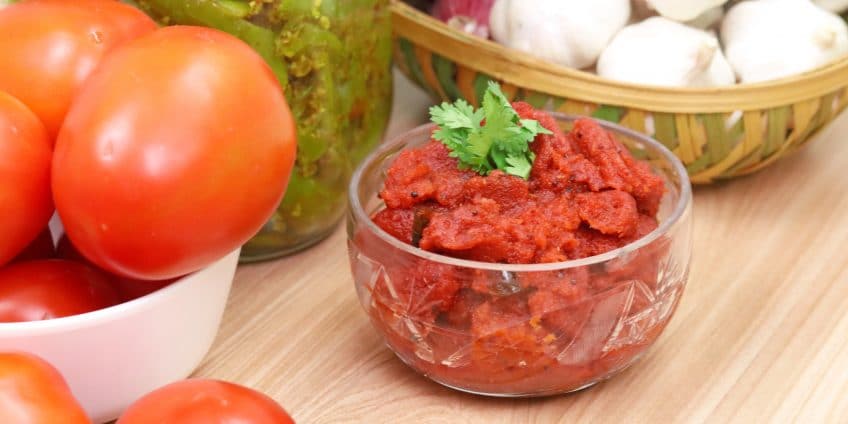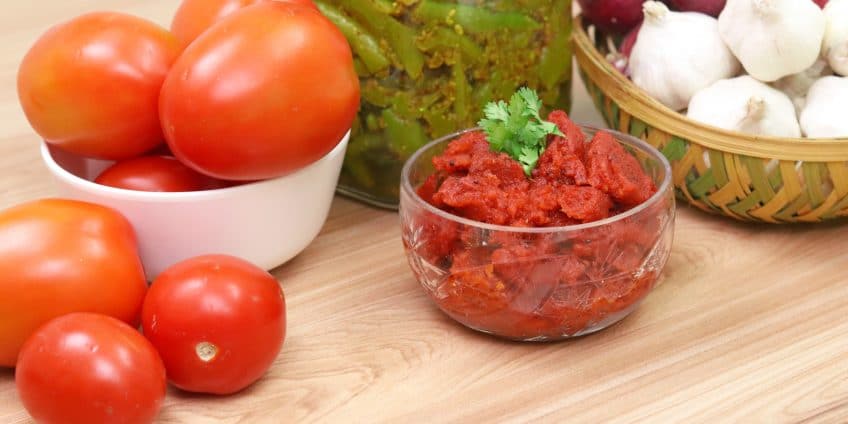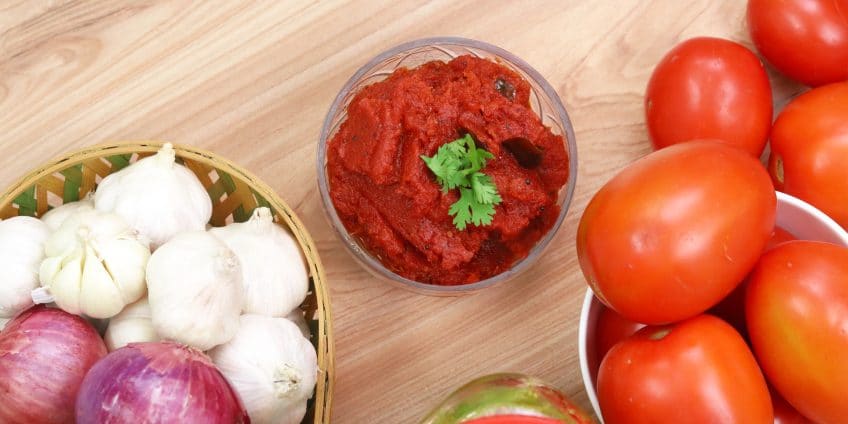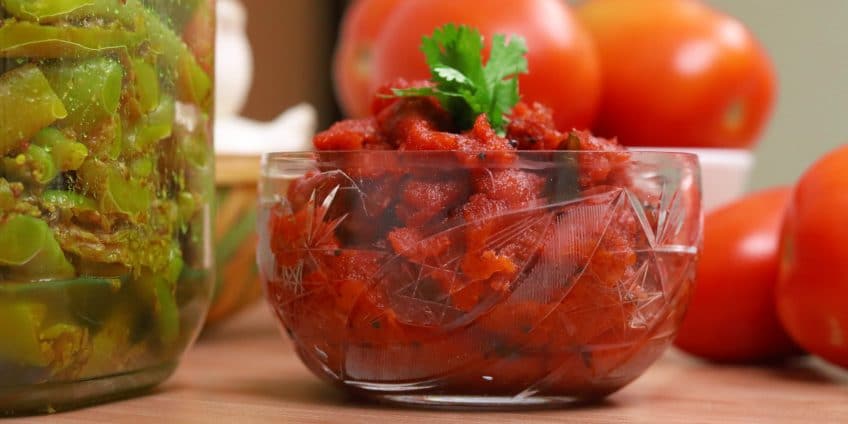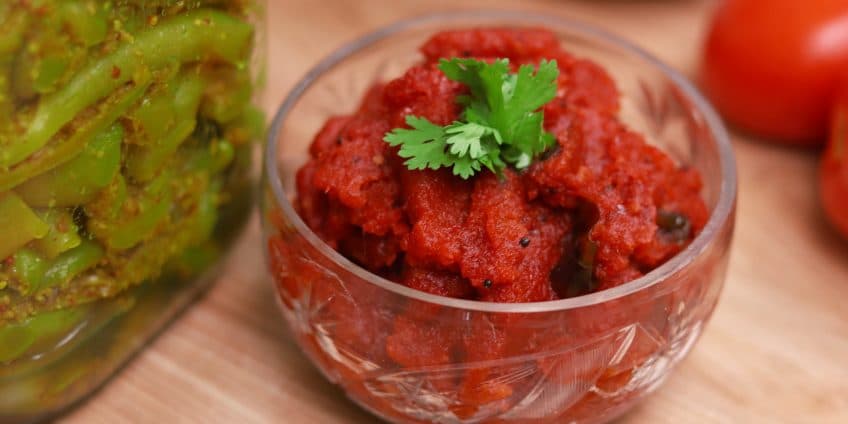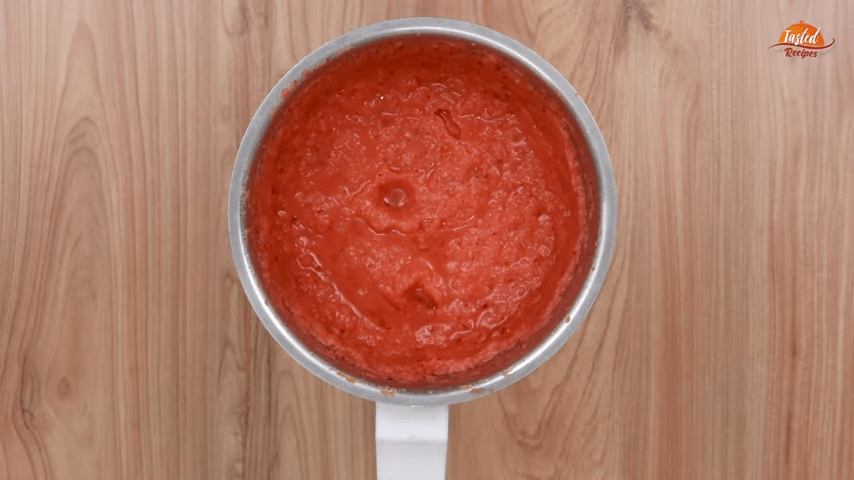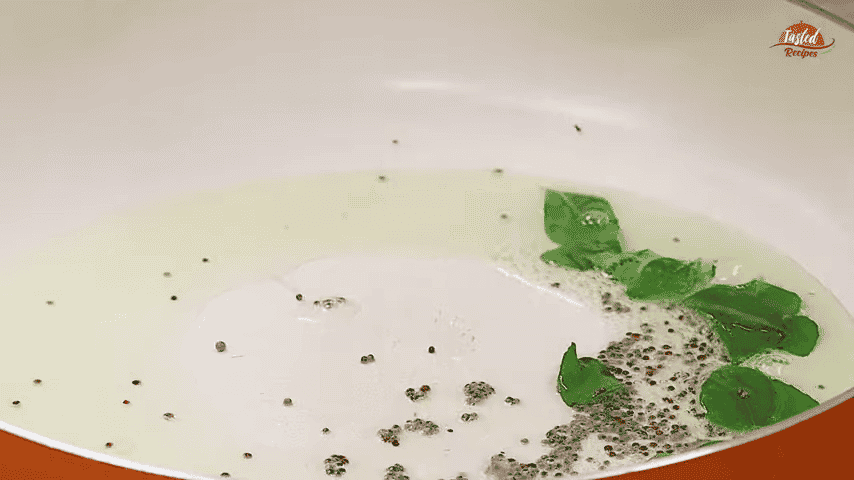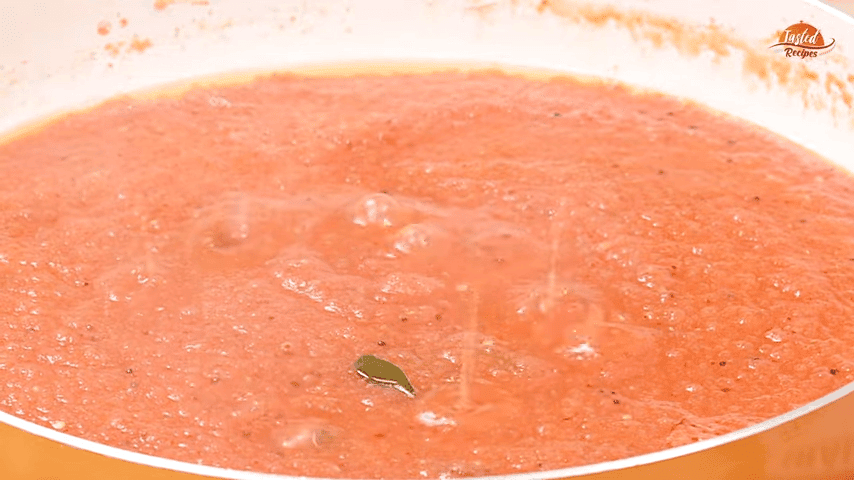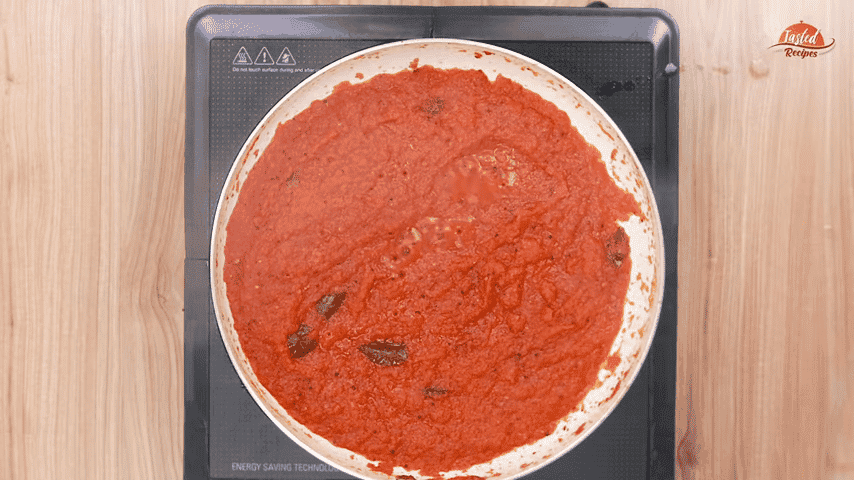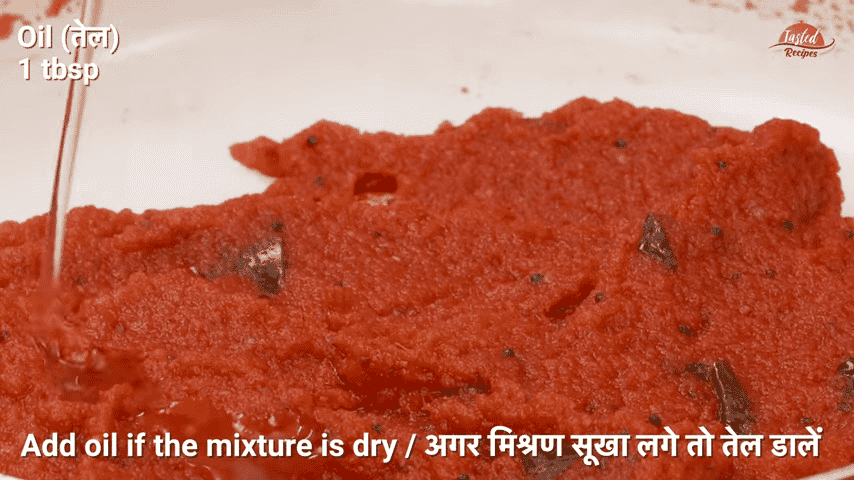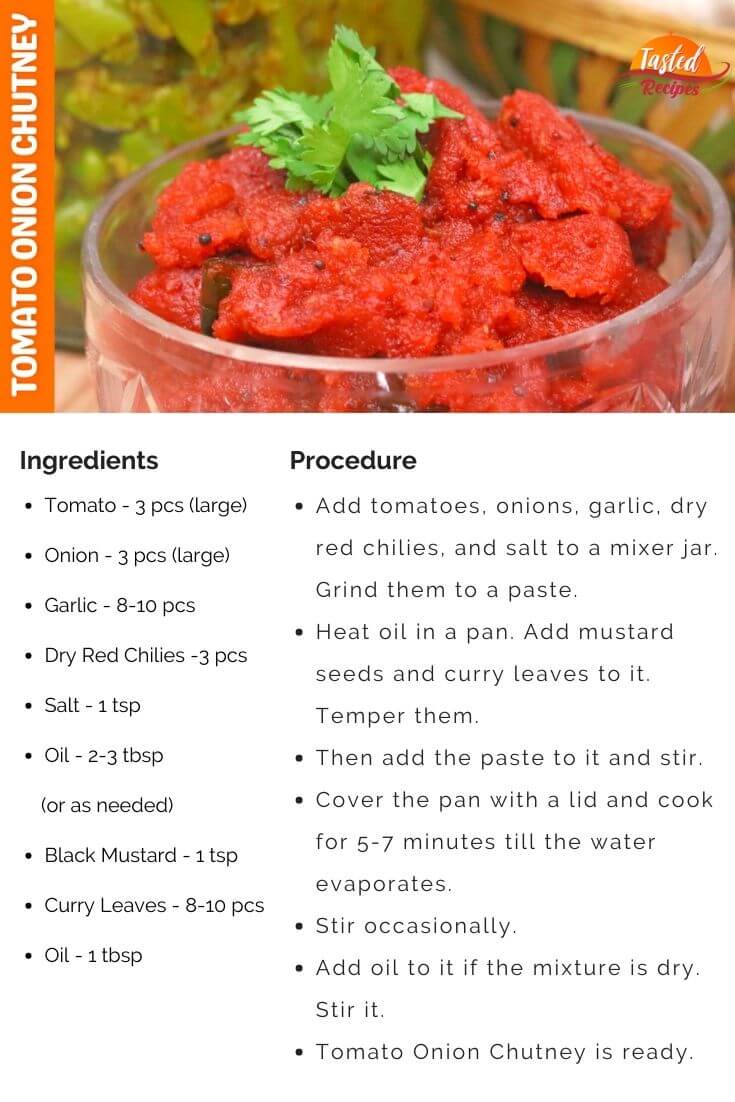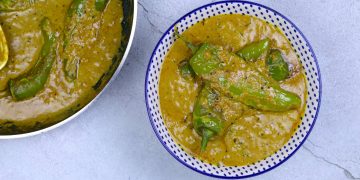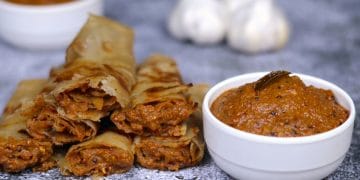Tomato Onion Chutney is yet another accompaniment from the chutney realm. Further, it is also used as a condiment to flavour main course dishes. For instance, it works well with a majority of paneer dishes.
According to Wikipedia, chutney is a spread in the cuisines of the Indian subcontinent. They are made in various forms, such as tomato relish, ground peanut garnish, yoghurt or curd, cucumber, spicy coconut, onion, or mint dipping sauce.
This condiment is not only available in a wide variety but also vivid colours. For example, we have red and green chutneys. Then we also have white and dark red chutneys too. Further, we also have variety in the texture of chutneys too. Some of them are watery, and then some are thick and sticky.
Chutneys originated in India and became popular in western countries as an appetiser in the 17th century. In those days, chutneys, especially fruit chutneys, were considered luxury goods. But, surprisingly, what we call chutney here in India is spread, dips or sauce in the western regions.
Chutney v/s Pickle
The word chutney is derived from the Hindi word चटनी, which is further derived from the phrase चाटना which is to lick. On the other hand, pickle means अचार in Hindi.
The primary difference between chutney and pickle is the oil. Pickles contain oil, and they are sour/spicy. However, Indian pickles are famous for being both sweet and spicy at the same time.
On the contrary, a chutney is oil-free most of the time.
Besides, some chutneys even don’t need to be cooked. Just blend the ingredients, and it is done. In contrast, pickles need a longer shelf life with exclusive preservatives. That’s how chutney and pickles are differentiated in India.
Okay, now, let’s get back to our tomato onion chutney recipe.
Flavours in Tomato Onion Chutney
First thing first, this is a basic tomato onion chutney. Although it is a basic one, still we have a variety of flavours in it. For example, we have garlic and red chillies for a spicy and pungent taste. Then we have mustard seeds for a mildly hot and bitter taste.
Simultaneously we also have curry leaves to add a faintly spicy and sweet flavour. When you temper the curry leaves, it releases a sweet and woody aroma making your tomato onion chutney more delightful.
Watery Tomato Onion Chutney?
Here’s how to deal with the excess water content in your chutney. First, we need to understand that onions and tomatoes both contain water. Hence, you can’t avoid it. In addition, they won’t be completely dry when you grind onion and tomatoes to a thick paste.
We need to cook for at least 5-7 minutes and wait until the water evaporates to make it dry. Meanwhile, stir the mixture to not stick at the bottom. Additionally, keep the flames low. Most importantly, don’t add extra water if the mixture sticks at the bottom. Since your flames are low, there are fewer chances that your mixture will burn.
Instead of water, add oil if the mixture is dry and starts burning. Your tomato onion chutney will be ready when the oil starts separating. This is where you need to stop cooking it further. Remove the chutney from the hot pan. Allow it to cool down, and then store it in a glass container with a tight lid.
Tomato Onion Chutney Extra Shots
Cooking tips are always helpful, especially when it comes to the chutney. There are a lot of things that you can mix and match. Let’s see what we can do here.
- Add readymade tomato ketchup for taste and lovely red colour to the chutney.
- Use red and juicy tomatoes.
- You can add 1/2 tsp Kashmiri red chilli powder to colour your chutney red.
- Cook the mixture until oil separates; otherwise, it will be watery.
- Either red or white onions will do. White onions are hot compared to red ones.
- Store your tomato onion chutney in a glass container away from direct heat or sunlight.
Tomato Onion Chutney FAQs
Can I add vinegar to give my chutney a long shelf life?
You can add vinegar for longer shelf life. I suggest not making chutneys in large quantities because you need to store them. Instead, make it in small batches, serve and finish it without leftovers.
Can I add fresh coriander leaves here?
You can sprinkle freshly chopped coriander to garnish but not as an ingredient. Coriander leaves chutney is a different recipe. Refer to the 13 chutney list above.
Will cumin seeds work well in tempering?
Yes, you can add cumin, aka jeera, while tempering. Just 1/2 or 1/4 tsp will do. Even roasted and crushed coarse cumin will add a nice smooth flavour plus aroma. Try it.
Why there’s no powdered masala in this chutney recipe?
First, if you add powdered masala, it won’t be chutney anymore. Instead, it will become a thick paste used to make main course items. Hence, there’s no powdered masala in here.

